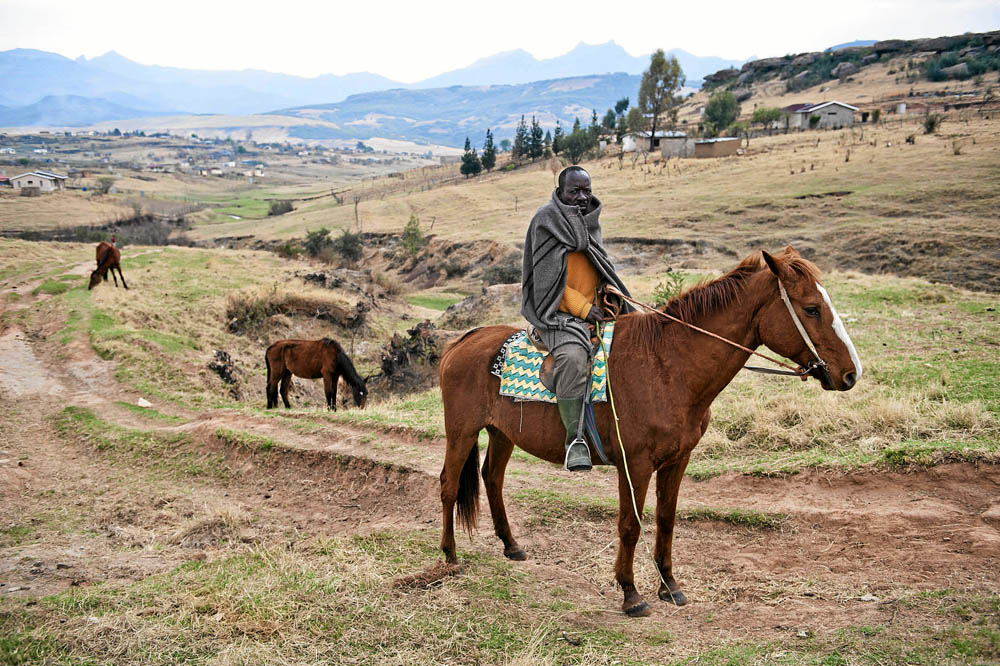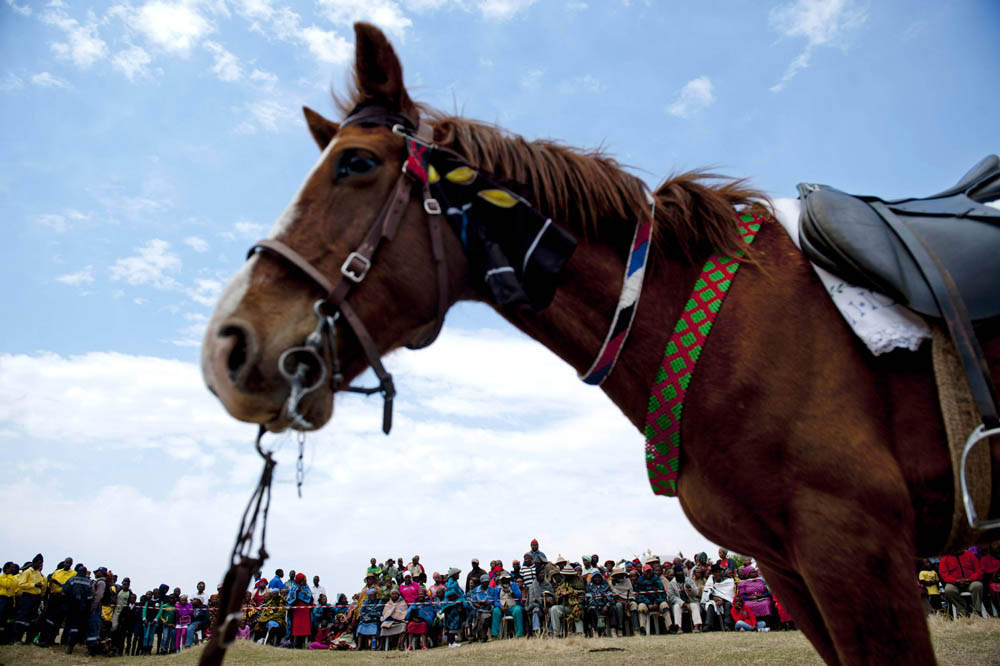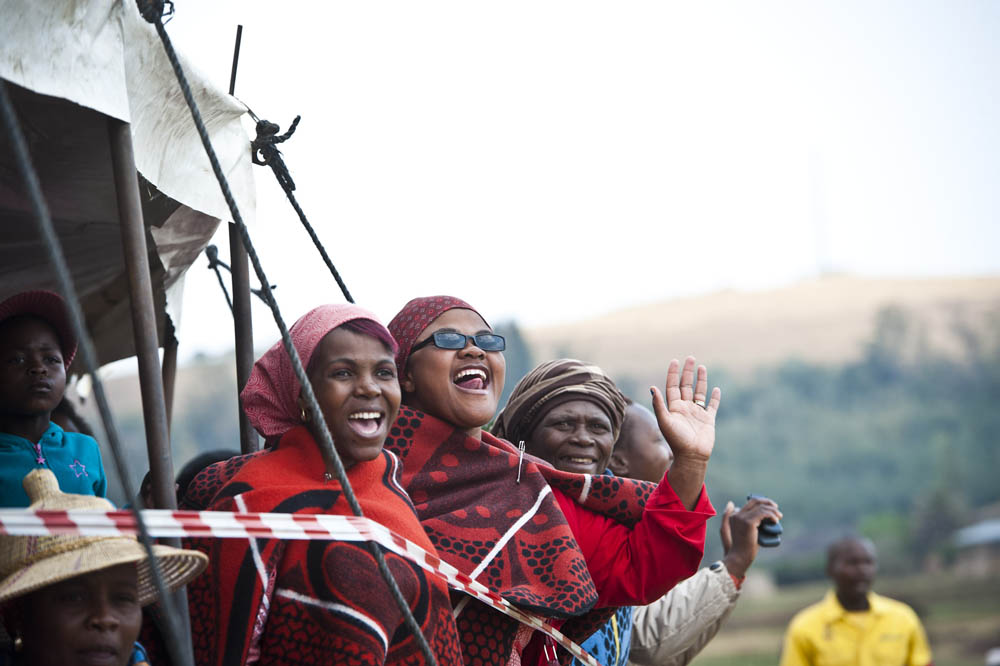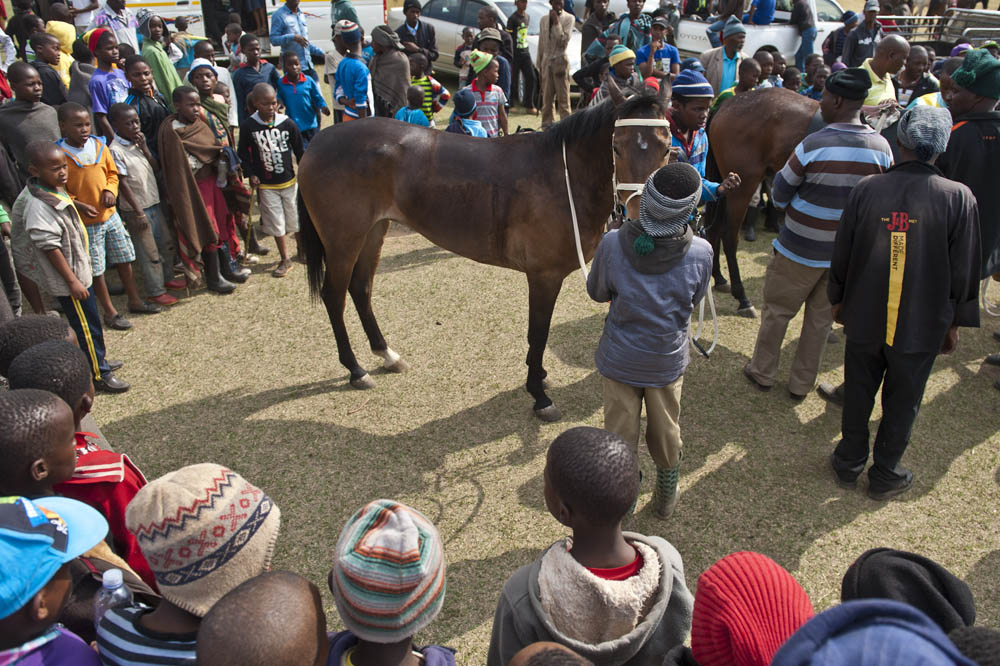The annual horse races in Mparane
It’s early morning and the sky is painted a dull, soft grey, contrasting with the darker grey of the mountain range that stretches along the skyline.
Villagers snake along the paths that come from all directions. Some come on foot, others arrive on horseback. They wear vibrant Basotho blankets, straw hats, overalls, gumboots and balaclavas. Groups of women and girls arrive in matching traditional outfits, decorated skirts and beaded sashes.
All are heading towards an enormous three-pole white tent, the largest in the area, packed with 1 700 chairs in expectation of the crowds for the annual Mehloding Heritage Event Horse Race in Mparane, a village close to the border between Lesotho and South Africa in the lower region of the Drakensberg.
A makeshift barrier, a strip of red and white emergency tape on either side of the home run, holds back the crowds and creates a wide corridor for the riders to gallop through.
The crowd awaits the riders’ grand entrance from over a nearby hill. Senses are sharpened: eyes filled with anticipation squint into the distance and ears strain for the sound of distant galloping.
Surge of energy
Then the first rider appears over the hill. It takes a few seconds before the next one shows himself and, as he does, another shows, then another. A surge of energy moves through the crowd.
Women ululate and the alert passes like a relay baton to the children, who jostle, shove and pull each other, as they try their best to gain a better view as the racers come in fast, like warriors. The goal: an unmarked finish line.

Villagers like Moses Gangane come from far and wide to watch or take part. (Photos: Delwyn Verasamy, M&G)
First introduced in 2010 by the Freedom Challenge bike race in conjunction with the Mehloding Community Tourism Trust, the horse race coincides with the Ride to Rhodes, a 500km six-day ride that takes adrenaline junkies along dirt-track trails from Pietermaritzburg in KwaZulu-Natal to Rhodes in the Eastern Cape.
The race now boasts 130 horses and nine horse clubs from the area. But the appeal has grabbed the attention of distant villages, with some travelling as far as 150km to attend the event.
“Normally you see the horse races on television,” says an elderly man with a pointy grey beard, referring to the opulent Durban July. “This is free and it’s for everyone.”
Race marshals
Here the race marshals are stern men clad in Basotho blankets. Armed with thin twigs, they guard the inner perimeter, patrolling it determinedly and threatening anyone who might dare cross the track at the pivotal moment the riders pass.
Far in the lead comes a boy, wearing a helmet, black jacket and brightly patterned blue overalls.
His bare feet are pressed hard into the faded metal stirrups, which are held up by equally old leather straps. He rides bareback, with only the reins to hold him steady and to control his animal. He clings on to his proud stallion, wild and raw with power, its hooves tearing into the earth, kicking up dust in its wake.

The race now boasts 130 horses and nine horse clubs from the area.
A deep trench splits the track into two paths for racers to ride through. The boy chooses the left and races toward the invisible finish line. But neither he nor his horse seem to know where the finish line is and continue galloping 500m past the crowds.
The exact distance of the first race, a sprint to determine the fastest horse, is unmeasured; the starting line lost to view as it sits below a slope of the hill on the edge of the village. The finish line lies somewhere loosely imagined among the standing spectators closest to the tent.
The sprint is followed by two other races. Comparable to speed walking for horses, the traditional race requires horses to trot in a proud manner with their heads held high, bodies perfectly postured, graciously cantering to the finish line.

Ululating women cheer on the riders.
Names are called up: Sunlight, Cassette, Oupas, Bin Laden, Minus, Bullet, Divorce, Internet. Riders make their way, bearing no identification, race names or numbers.
Among the locals everyone is known to each other; some of these men are legendary riders who are now coaching the younger generation, handing over the reins to those who will become the next generation’s best. The favourites? Pilot, Jealous and Sempe.
Disputed winner
After the second race, a heated argument breaks out between two large groups of male supporters. There is a dispute between the winner and the second-placed rider over who actually won.
The judges are called and the crowd steps in, arguing for both parties and bearing evidence as if in a court of law.
But rules for the races are unclear, with everyone shouting out their own view and the proper solution. After the crowd quietens down, the judges finally agree that both horses deserve the win. A draw is declared.

Spectators gather around to admire the winners.
Later, inside the sprawling white tent, the prize-giving takes place. Invited dignitaries arrive in their suits and are called up to hand over the prizes.
Finding the winners proves difficult as the conveners attempt to call them up on to the stage over a PA system powered by a simple generator that drones in the background.
The prize: R1 700 and a 50kg bag of feed for the horse.
Bike ride helps pupils
The Freedom Challenge has set up a scholarship to help pupils from the areas the Ride to Rhodes cyclists pass through. So far, nearly 20 children have been chosen to study at Mariazell Mission, regarded as one of the best schools in the Eastern Cape.
For more information, visit freedomchallenge.org.za.